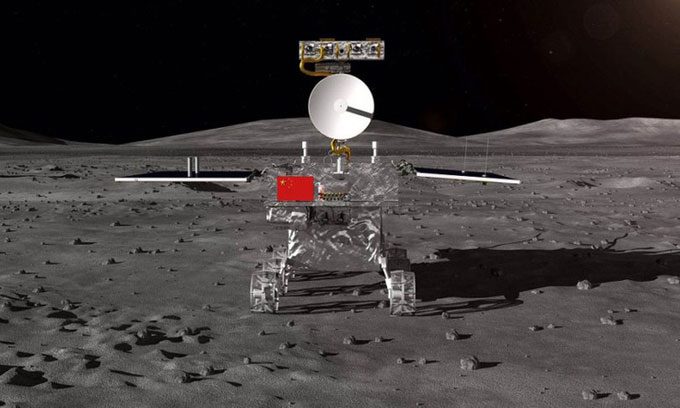NASA to Invest in New Projects to Gather Data on the Moon’s Far Side, Preparing for Human Return to the Moon.
NASA has selected three new scientific projects for the Commercial Lunar Payload Services (CLPS) under the Artemis program, which aims to return humans to the Moon, Engadget reported on June 12. Two of the three projects will land equipment on the far side of the Moon. If successful, this will mark NASA’s first landing on the Moon’s far side. The mission’s goal is to collect data about this region, a potential destination for future Artemis astronauts.

Illustration of Chang’e 4 landing on the Moon’s far side. (Photo: Chinese Academy of Sciences).
No vehicle had successfully landed on the Moon’s far side until January 2019, when Chang’e 4 landed in the Aitken Basin, making China the first country to achieve this milestone. However, much research remains to be done on the Moon’s far side before humans can be sent there.
One of the three projects NASA has just selected, Seismic Study of the Far Side, will target the Schrodinger Crater to study tectonic activity in greater detail. This project, led by the Jet Propulsion Laboratory (JPL), aims to use two seismometers to collect data over several months. In addition to studying tectonic activity, the project will also investigate the impact of small meteoroids on the far side, while providing additional data on the Moon’s structure.
The second project, Materials and Temperature Inside the Moon, also focuses on the Schrodinger Crater with two devices designed to study heat flow within the Moon and its electrical conductivity.
The remaining project, Moon’s Peak, Reiner Gamma, is one of the most prominent lunar swirls when observed from Earth. Experts still do not fully understand what lunar swirls are and how they form. However, they believe that these swirls are related to anomalies in the Moon’s magnetic field. Moon’s Peak includes a lander and a robot tasked with conducting magnetic field measurements.
All three projects were submitted to NASA under the Payload and Research on the Lunar Surface (PRISM) program last year. The teams are still negotiating with the agency regarding the funding they will receive to bring the projects to fruition. Meanwhile, NASA aims to send the equipment to their destination by 2024.
- Successful extraction of lithium from seawater using a cost-effective and efficient process, achieving up to 9,000 milligrams/liter
- Prehistoric monster nearly 20 meters long: A terror for all underwater species
- A shabby tomb, but the person inside wears a royal robe: Archaeologists puzzled over the identity!



















































